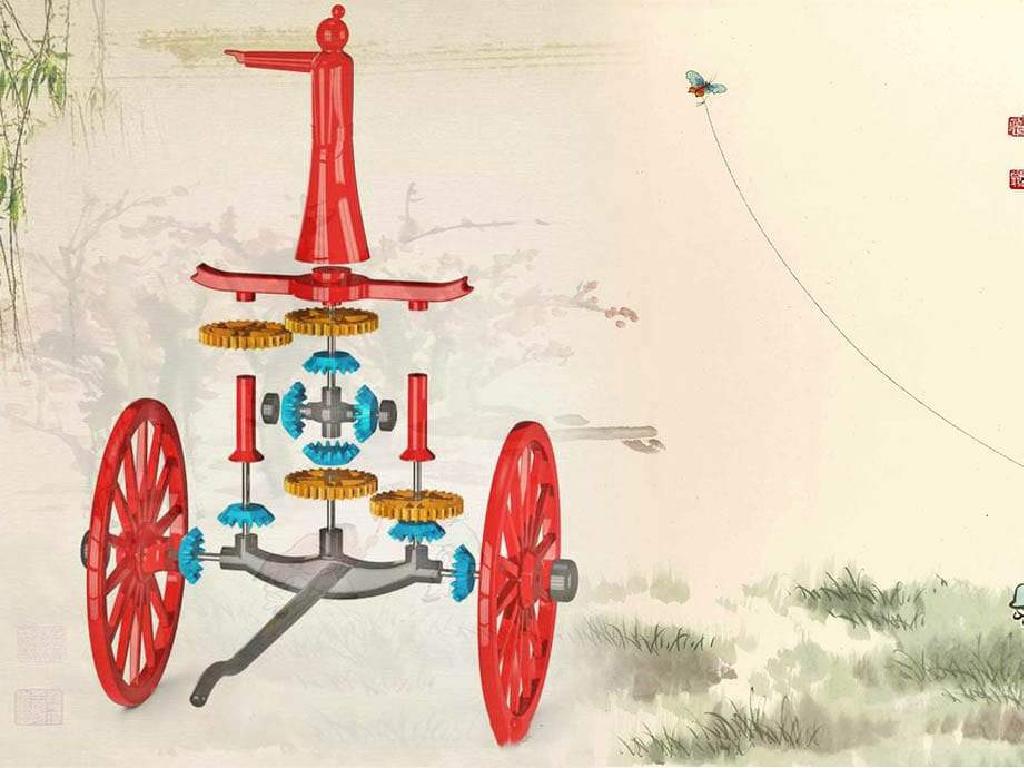International Organizations
Subject: Social studies
Grade: Seventh grade
Topic: Government
Please LOG IN to download the presentation. Access is available to registered users only.
View More Content
Welcome to International Organizations!
– Countries collaborating globally
– Defining International Organizations
– Entities where different nations work together towards common goals
– Significance in global society
– They address worldwide issues, promote peace, and facilitate cooperation
– Examples of International Organizations
– UN, NATO, WHO, and WTO are some examples that impact our daily lives
|
This slide introduces the concept of International Organizations and their role in fostering cooperation between countries. It’s crucial for students to understand that these organizations are platforms where nations unite to address global challenges, promote peace, and work towards common objectives. Emphasize the importance of such entities in our increasingly interconnected world, where issues like climate change, health, and trade require collective action. Provide examples like the United Nations (UN) for peacekeeping, North Atlantic Treaty Organization (NATO) for defense, World Health Organization (WHO) for public health, and World Trade Organization (WTO) for trade regulations. Discuss how these organizations influence global policies and have a direct or indirect impact on our daily lives.
The Role of Government in International Affairs
– Recap: What is government?
– A governing body that provides leadership and organization
– Government’s role internationally
– Manages relations, trade, and treaties with other nations
– Global collaboration between governments
– Cooperation through treaties, alliances, and organizations
– Examples of international organizations
– UN, NATO, WHO, and WTO facilitate international cooperation
|
Begin with a brief review of the concept of government, emphasizing its role in creating order, providing services, and making laws within a country. Then, transition to discussing how governments interact on an international level, managing relations, trade agreements, and treaties. Highlight the importance of global collaboration, where governments work together to address worldwide issues, such as climate change, peacekeeping, and health crises. Provide examples of international organizations like the United Nations (UN), North Atlantic Treaty Organization (NATO), World Health Organization (WHO), and World Trade Organization (WTO) to illustrate these points. Encourage students to think about how these organizations impact their daily lives and the importance of international cooperation.
Types of International Organizations
– Intergovernmental Organizations
– E.g., United Nations (UN)
– Nongovernmental Organizations
– E.g., Red Cross
– Multinational Corporations
– E.g., Coca-Cola
– Roles and Examples
|
This slide introduces students to the different types of international organizations and their roles in global affairs. Intergovernmental Organizations (IGOs) are made up of member states and work on collective international objectives, like the United Nations, which focuses on peacekeeping and humanitarian aid. Nongovernmental Organizations (NGOs) are independent groups that work towards specific causes, such as the Red Cross, which provides emergency assistance and disaster relief. Multinational Corporations (MNCs) are large companies that operate in multiple countries, like Coca-Cola, which sells products worldwide. Understanding these organizations helps students grasp how cooperation and business are conducted on an international scale. Encourage students to think of other examples and consider the impact these organizations have on their daily lives.
The United Nations: Pillar of Global Cooperation
– Origin and history of the UN
– Formed post-WWII to prevent conflict
– UN’s main objectives & Charter
– Aims for peace, human rights, and development
– Overview of UN structure
– Comprises various organs and agencies
– Key UN bodies: Assembly & Council
– General Assembly for representation, Security Council for peacekeeping
|
The United Nations was established after World War II with the aim of preventing future wars and fostering international cooperation. The main objectives outlined in the UN Charter include maintaining international peace and security, promoting social and economic development, and protecting human rights. The structure of the UN includes the General Assembly, where all member states are represented, and the Security Council, which is responsible for maintaining international peace and can authorize military action. Other important bodies include the Economic and Social Council and the International Court of Justice. Discuss the role and function of each body and how they work together to address global issues. Encourage students to think about how international cooperation can help solve problems that affect multiple countries.
Case Study: The UN’s Role in Peacekeeping
– What is UN peacekeeping?
– UN peacekeeping involves monitoring ceasefires and creating safe zones.
– UN peacekeeping mission examples
– Missions include UNEF in Egypt and UNIFIL in Lebanon.
– Impact on international relations
– Peacekeeping promotes global stability and diplomatic dialogue.
– Understanding peacekeeping success
|
This slide aims to educate students on the concept of peacekeeping by the United Nations. Peacekeeping is a unique and dynamic instrument developed by the organization to help countries torn by conflict create conditions for lasting peace. Provide historical context by discussing past missions like the United Nations Emergency Force (UNEF) in Egypt or the United Nations Interim Force in Lebanon (UNIFIL). Highlight how these missions have helped to stabilize regions, reduce conflict, and enhance international relations by providing neutral forces to ensure peace and security. Discuss the criteria for success and the challenges faced in peacekeeping operations. Encourage students to think critically about the effectiveness of these missions and their long-term impact on global peace.
Other Key International Organizations
– Role of the World Health Organization
– WHO: Leads global health efforts, manages disease outbreaks.
– Function of the International Monetary Fund
– IMF: Oversees global financial system, offers economic support.
– Impact on daily life
– Examples: WHO health guidelines, IMF economic policies affect prices.
|
This slide introduces students to the World Health Organization (WHO) and the International Monetary Fund (IMF), explaining their roles and how they influence everyday life. The WHO is responsible for international public health, coordinating responses to health crises, and setting health guidelines. The IMF works to ensure the stability of the international monetary system and provides financial assistance to countries in need. Discuss how WHO’s health guidelines can affect school health policies and how IMF’s economic decisions might influence the cost of goods and services, thereby impacting students’ family budgets. Encourage students to think about how these organizations’ decisions might affect their lives, such as during a global pandemic or economic downturn.
Challenges of International Organizations
– Complexities of cooperation
– Nations have diverse agendas and interests, making collaboration tough.
– Political and funding challenges
– Political ideologies differ; funding is often limited and uneven.
– Enforcement difficulties
– Enforcing international agreements can be problematic without a central authority.
– Diplomacy and negotiation
– Successful resolution of issues often hinges on diplomatic skills and negotiation.
|
This slide aims to shed light on the hurdles that international organizations face in achieving their goals. Students should understand that while the idea of countries working together is noble, in practice, it’s fraught with difficulties. These include the complexity of aligning multiple countries’ interests, the challenges posed by political differences, the scarcity of resources and the equitable distribution of funds, and the enforcement of international laws and agreements. Emphasize the critical role of diplomacy and negotiation in overcoming these challenges. Provide historical examples, such as the formation of the United Nations or the challenges faced by the World Health Organization, to illustrate these points in a manner that seventh graders can grasp.
Class Activity: Model UN Simulation
– Students represent assigned countries
– Discuss a current global issue
– Choose an issue like climate change or human rights
– Collaborate on a draft resolution
– Use negotiation skills to find common ground
– Reflect on the experience
– Share what you’ve learned about diplomacy
|
In this Model UN simulation, students will enhance their understanding of international relations and the role of the United Nations. Each student will represent a different country, providing them with a unique perspective on a current global issue. They will engage in discussions, mirroring real UN debates, and work collaboratively to draft a resolution that addresses the issue at hand. This activity will require students to employ critical thinking, diplomacy, and cooperation. Teachers should prepare a list of countries and issues beforehand, and guide students on how to research their assigned country’s policies. After the activity, encourage students to reflect on the challenges and successes of international negotiation and the importance of global cooperation.
Conclusion: The Role of International Organizations
– Recap: Why organizations matter
– International cooperation benefits
– Working together for peace, security, and development
– Solving global issues together
– Tackling climate change, poverty, and health crises
– Engage in Q&A session
|
This slide aims to summarize the key points discussed about international organizations and their significance in promoting global cooperation. Emphasize the role these entities play in addressing worldwide challenges such as climate change, poverty, and health-related issues. Encourage students to reflect on how collaborative efforts can lead to effective solutions. Conclude the presentation with an interactive Q&A session, allowing students to ask questions and clarify any doubts they may have. This will help reinforce their understanding and engage them in critical thinking about the subject matter.






